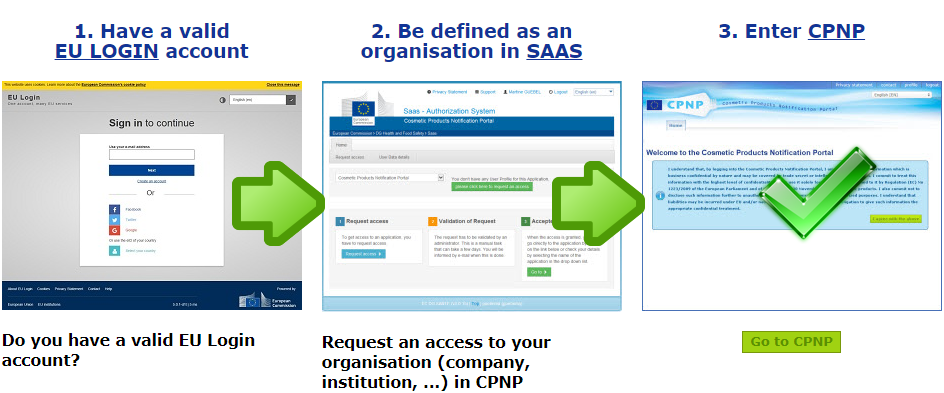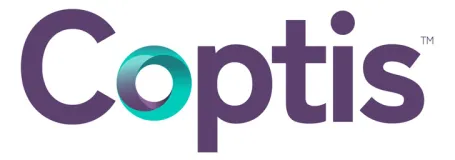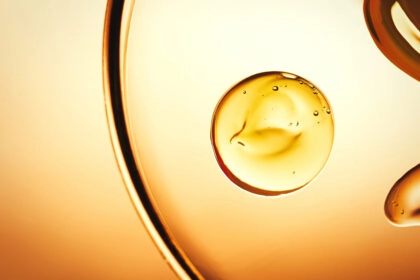Cómo notificar un producto cosmético en el portal del CPNP
El reglamento europeo sobre productos cosméticos exige la notificación en línea de cada producto cosmético en el portal europeo de productos cosméticos, el CPNP, antes de su lanzamiento al mercado (Reglamento (CE) n°1223/2009 sobre productos cosméticos, artículo 13). Esta notificación es bastante sencilla, pero hay que prepararla con antelación.

¿Qué es el CPNP?
El Portal de Notificación de Productos Cosméticos (CPNP) es el sistema de notificación en línea para la comercialización de un producto cosmético. Es donde se centralizan todos los productos cosméticos en el mercado europeo y constituye una base de datos interna del CPNP de la CE, por lo tanto, no es accesible al público. Sin embargo, las autoridades nacionales de supervisión de los estados miembros y los centros de toxicología pueden acceder al CPNP (la primera para la vigilancia del mercado, la segunda para el tratamiento médico).
La notificación de un producto cosmético es obligatoria antes de su lanzamiento al mercado, pero no es una autorización de comercialización. La información presentada no es validada por la CE, y la notificación correcta no significa que el producto cumpla con el Reglamento Cosmético. Tan pronto como se notifica el producto, la información está inmediatamente disponible electrónicamente para las autoridades de control de los países miembros y los centros de toxicología. No es necesario notificar a nivel nacional, excepto en casos específicos (por ejemplo, la declaración de instalaciones de fabricación en Francia).
Se recomienda notificar un producto poco antes de su lanzamiento, pero no en el último momento.
Pasos de notificación
El Reglamento de Cosméticos prevé dos tipos de notificadores: la Persona Responsable o los Distribuidores. Antes de empezar a notificar en el CPNP, es necesario determinar quién notifica. En ambos casos, es posible delegar la notificación (por ejemplo, a un proveedor de servicios). Pero antes de eso, es necesario solicitar el acceso al CPNP, lo que implica varios pasos si es la primera vez y, por lo tanto, debe anticiparse (en la imagen).
Link tutorial : https://webgate.ec.europa.eu/cpnp/public/tutorial.cfm
La creación de una cuenta de acceso a la UE es el primer paso, utilizando la interfaz ECAS. Una vez creada la cuenta, se debe solicitar y crear el acceso al CPNP en la interfaz SAAS. Una vez creada la cuenta, se debe solicitar y crear el acceso al CPNP a través de la interfaz SAAS. Esta es una oportunidad para crear la cuenta de la empresa si no existe, que incluirá la lista de productos cosméticos notificados y en proceso de notificación. También es posible unirse a una cuenta existente a través de una lista. Incluso si la notificación es delegada, la empresa que pone los productos en el mercado debe crear una cuenta en el CPNP y administrar el acceso a esa cuenta. Debido a que los identificadores son personales, tenga cuidado de no quedar bloqueado si el administrador de la cuenta abandona la empresa sin proporcionar el inicio de sesión. Una vez que se haya validado el acceso al CPNP, puede comenzar la notificación.
Enlace de inicio de sesión: https://webgate.ec.europa.eu/cpnp/public/ecas-create.cfm
Enlace de acceso al CPNP: https://webgate.ec.europa.eu/cpnp/public/saas-start.cfm
Los pasos para acceder al CPNP cuando inicia sesión por primera vez.

Si el producto a notificar contiene nanomateriales, a veces es necesario notificarlo con antelación, por lo que hay que tenerlo en cuenta.
El caso de los nanomateriales
Cuando el producto cosmético contenga nanomateriales, deberá notificarse en el portal del CPNP al menos 6 meses antes de su comercialización. Esta disposición se aplica a los nanomateriales no incluidos en los Apéndices IV (colorantes), V (conservadores) o VI (filtros UV). Se deberá proporcionar la siguiente información:
– La identificación del nanomaterial (incluido su nombre IUPAC)
– Sus especificaciones
– Una estimación de la cantidad de este nanomaterial que se comercializa cada año en productos cosméticos
– El perfil toxicológico del nanomaterial
– Sus datos de seguridad
– Sus condiciones de exposición razonablemente predecibles
Este período de 6 meses permite a la Comisión Europea solicitar una opinión del SCSC sobre la seguridad del nanomaterial en caso de duda.
¿Cómo notificar en el CPNP?
La notificación del producto cosmético por parte del Responsable (o su delegado) requiere la siguiente información:
- Categoría del producto (consistente con su función principal)
- El nombre del producto: debe ser lo suficientemente preciso para permitir que las autoridades de control o los centros de control de intoxicaciones lo encuentren específicamente. Debe adoptar la forma de marca/línea/nombre específico, incluida su función. Si este nombre se traduce para su comercialización en uno o más estados miembros, se deben añadir estas traducciones
- El nombre y la dirección de la persona responsable
- Los datos de contacto de al menos una persona a la que contactar en caso necesario
- El país de origen si el producto es importado
- Sustancias CMR (1A y 1B)
- Nanomateriales: identificación y exposición razonablemente predecibles
- La fórmula (véase el cuadro de información)
- El etiquetado original y una fotografía del embalaje original
La notificación actual se puede grabar como borrador y completar más tarde.
¿Cómo declarar la fórmula del producto?
La fórmula del producto se puede presentar de diferentes formas:
– La fórmula marco: hay 140 disponibles. Dependiendo de la categoría del producto, el portal sugiere una lista de ellas. Tenga en cuenta que la notificación con fórmula marco solo se puede elegir si la fórmula se ajusta perfectamente a los rangos de concentración. Se pueden solicitar detalles adicionales para algunos ingredientes, como el etanol o los aceites esenciales.
– Las concentraciones exactas.
– Los rangos de concentración. También se pueden solicitar detalles adicionales en este caso.
En ocasiones, un distribuidor debe notificar un producto cosmético cuando éste se encuentra disponible en otro Estado miembro y traducir uno o más elementos del etiquetado por iniciativa propia. A continuación, debe presentar en el portal del CPNP:
- El nombre del producto en el estado miembro original
- El nombre del producto en el estado miembro en el que se comercializa
- El estado miembro involucrado
- El nombre y la dirección del distribuidor
- El nombre y la dirección de la persona responsable
Recuerde que la notificación debe registrarse antes de que el producto salga al mercado. Puede modificarse posteriormente, ya que pueden ser necesarias actualizaciones.
Después de la notificación
El producto se notifica y se comercializa, pero no es el único uso del CPNP. La notificación debe actualizarse en determinadas circunstancias. Por ejemplo, cuando la fórmula ya no se corresponde con la fórmula original o si se modifica significativamente la cantidad de un ingrediente, se modifica el rango de concentración o se añade o elimina un ingrediente nocivo de la fórmula.
Además de los cambios en la fórmula, la notificación se actualiza en caso de:
- Modificación del nombre del producto
- Lanzamiento al mercado en otro estado miembro
- Un nuevo idioma en el etiquetado o un nombre adicional
- Un cambio de la Persona Responsable o de sus datos de contacto.
Además, tenga cuidado de mantener actualizados los datos de contacto de la persona de contacto. Cuando el producto ya no se fabrica, una casilla de verificación específica puede alertar a los usuarios de CPNP.
Conclusión
La notificación de un producto cosmético en el portal electrónico CPNP no es el paso más complicado del desarrollo de un producto, pero aún así es necesario prepararlo. En los primeros pasos, hágalo con anticipación y prepare borradores. El uso de software de formulación de cosméticos puede facilitar la gestión de la fórmula específica y los ingredientes específicos.





